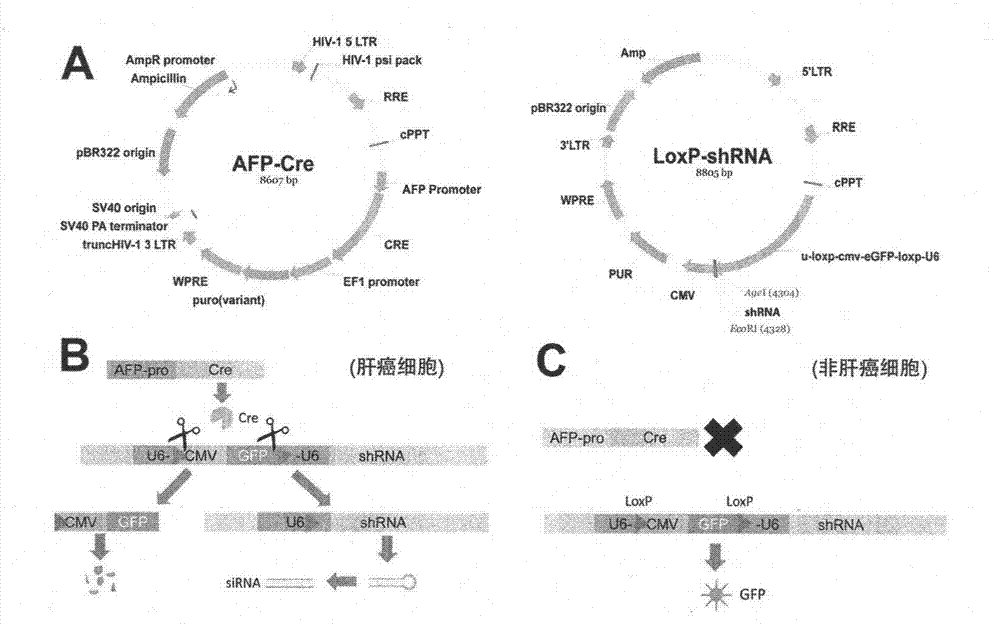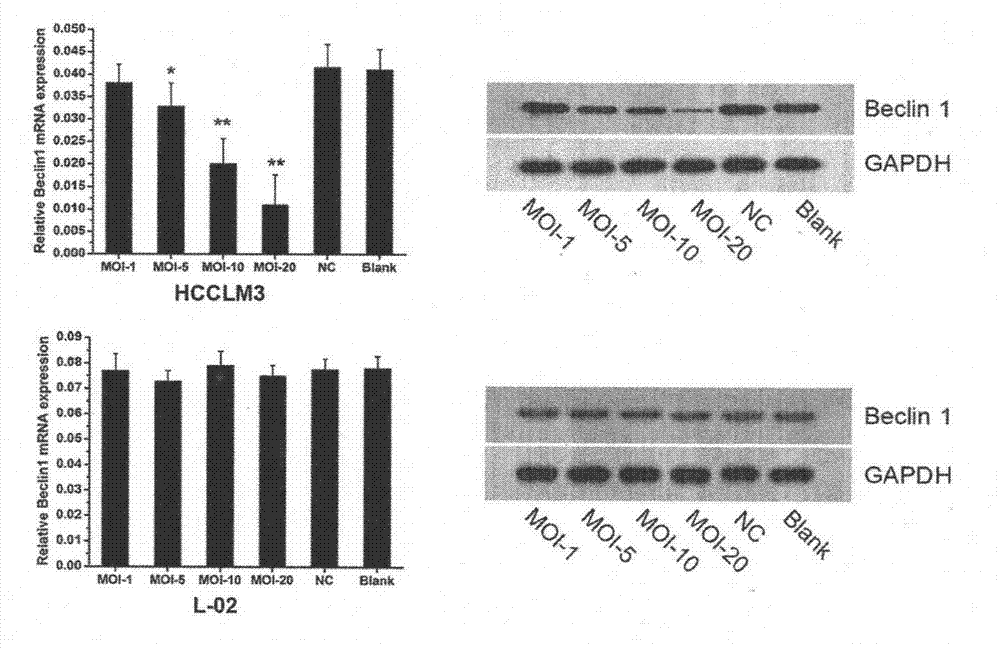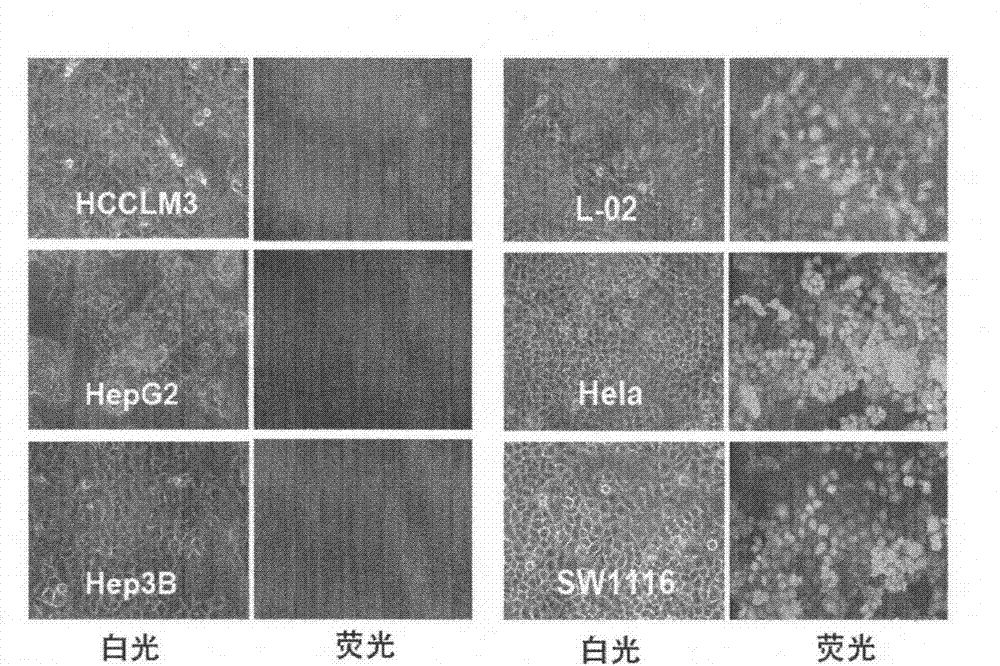Liver cancer tissue specific RNA (Ribose Nucleic Acid) interference system, as well as construction method and application method thereof
An RNA interference, liver cancer tissue technology, applied in the biomedical field, can solve the problems of low transfection efficiency, limited cell uptake, and short action time (rarely more than a week or a few weeks)
- Summary
- Abstract
- Description
- Claims
- Application Information
AI Technical Summary
Problems solved by technology
Method used
Image
Examples
Embodiment 1
[0043] This example is used to illustrate the construction process of the liver cancer tissue-specific RNA interference system AFP-Cre / LoxP-shRNA, and the application of this system to specifically inhibit the target gene (Beclin 1);
[0044] A liver cancer tissue-specific RNA interference system (AFP-Cre / LoxP-shRNA system) consists of an AFP-Cre vector and a LoxP-shRNA vector (such as figure 1 As shown in (A), both the AFP-Cre vector and the LoxP-shRNA vector were constructed from lentiviral vectors, wherein the AFP-Cre vector contained an AFP promoter and a Cre recombinase gene (called AFP- Cre structure), the LoxP-shRNA vector contains a modified U6 promoter (U6-LoxP-CMV-eGFP-LoxP-U6) and the shRNA sequence for the target gene located downstream of it (called LoxP-shRNA structure), LoxP -The modified U6 promoter contained in the shRNA vector (U6-LoxP-CMV-eGFP-LoxP-U6) is a U6 promoter with a LoxP-CMV-eGFP-LoxP structure inserted at 157 bp of the U6 promoter.
[0045] (1) C...
Embodiment 2
[0082] Embodiment 2 is used to further illustrate the specific application of the present invention. The liver cancer tissue-specific RNA interference system (AFP-Cre / LoxP-shRNA system) of the present invention is used to inhibit the Atg5 gene and enhance the curative effect of Sorafenib.
[0083] Studies have shown that inhibiting the Atg5 gene can enhance the efficacy of sorafenib, and the application of siRNA in vitro experiments has shown that inhibiting Atg5 can significantly enhance the apoptosis of liver cancer cells induced by sorafenib, and Atg5 thus becomes a potential therapeutic target gene. However, due to the lack of liver cancer tissue-specific RNA interference system, it is impossible to specifically interfere with the Atg5 gene in vivo and in vitro, so that targeted therapy cannot be achieved. The present invention uses the AFP-Cre / LoxP-shRNA system of the present invention to specifically inhibit Atg5, and observes its curative effect in vitro and in vivo.
...
PUM
 Login to View More
Login to View More Abstract
Description
Claims
Application Information
 Login to View More
Login to View More - R&D
- Intellectual Property
- Life Sciences
- Materials
- Tech Scout
- Unparalleled Data Quality
- Higher Quality Content
- 60% Fewer Hallucinations
Browse by: Latest US Patents, China's latest patents, Technical Efficacy Thesaurus, Application Domain, Technology Topic, Popular Technical Reports.
© 2025 PatSnap. All rights reserved.Legal|Privacy policy|Modern Slavery Act Transparency Statement|Sitemap|About US| Contact US: help@patsnap.com



